
Product test
M3 iMac Review: Heartbreaker
by Samuel Buchmann
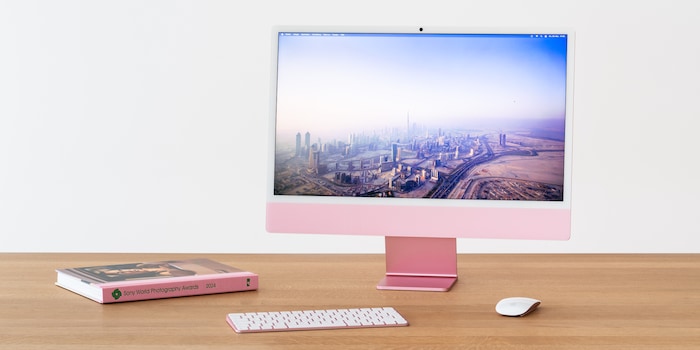
The cheapest iMac is a decent office computer. It’s the alternatives that are the problem. If it’s performance you’re after, there are better options out there.
The iMac’s back on my test bench – and it’s looking as pretty ever. Although the computer’s appearance also impressed me last year, what I found under the hood was disappointing. There wasn’t enough RAM and the chip in the base configuration throttled too quickly.
Apple has since given the iMac a new heart. The M4 chip comes with at least 16 gigabytes of RAM and is more efficient. As a result, you get more power – even with the cheapest version. However, it faces strong competition from Apple’s own range in the form of the MacBook and the Mac Mini.
Apple hasn’t changed the design; the new model’s just available in different colours than the old one. The company sent me a pink test device that Barbie would love. There are seven colours to choose from, so you should be able to find one that matches your interior. I particularly like the yellow and blue versions this year.
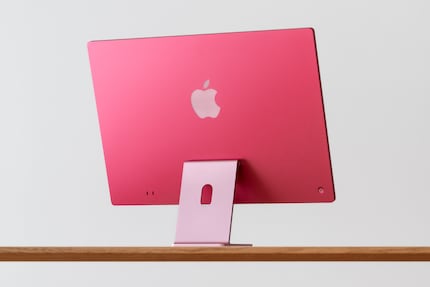
As before, the cheapest iMac has to make do with two USB-C ports (Thunderbolt 4, 40 Gbit/s). It’s only once you fork out 200 francs or 250 euros extra for the more powerful chip that you get four USB-C ports – and an Ethernet port in the power adapter. If you ask me, even that’s only barely enough.
For aesthetic reasons, all ports except the headphone jack are positioned on the back, which can be impractical. What I do like, however, is that the mouse, keyboard and optional trackpad can finally be charged via USB-C instead of Lightning. Better late than never, right?
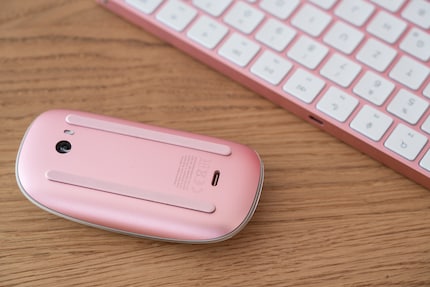
The sharpness of the display gives me no cause for complaint. That’s down to the 4,480 × 2,520 pixel resolution with a Retina pixel density of 218 pixels per inch. With a 500-nit peak brightness and full coverage of the DCI-P3 colour space, the display boasts other strong specs too. Even when the room’s bright, I can comfortably work on the iMac.
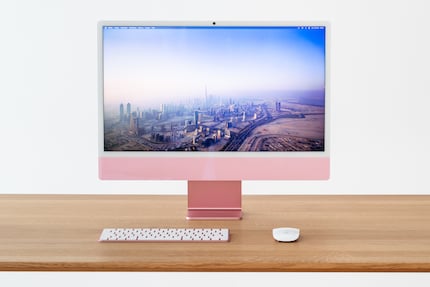
When it comes to value for money, however, the iMac M4’s a bit of a head-scratcher. If you configure it to the same level as the Mac Mini, it costs 900 francs more. That seems too pricey for a 23.5-inch display lacking mini LED or other current technologies. The 60-hertz frame rate seems outdated, the black level’s just average and the extensive backlight creates blooming in dark scenes.
These days, you can get 32-inch OLED monitors with 4K resolution in this price range. There are also reasonable, 27-inch office monitors costing half as much. Admittedly, they don’t have an Apple design, integrated webcam or built-in speakers. Mind you, the iMac’s speakers don’t sound particularly great either.
Plus, most other monitors are height-adjustable. The iMac, by contrast, is fixed in place. If you sit higher than Apple’s designers intended, you can put something under the base. If you sit lower, it’s tough luck.
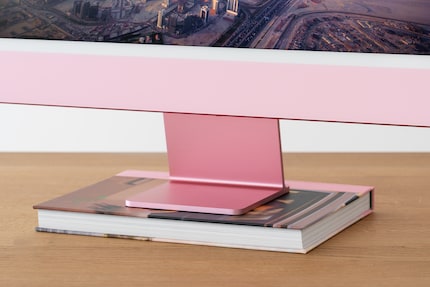
For the first time, the iMac is now available with Apple’s nano-texture glass, bumping up the price up by another 200 francs or 230 euros. Whether you prefer the matt or glossy finish is a matter of taste. You can read more about this in my MacBook Pro review. When it comes to iMacs, which are only used indoors anyway, I’d advise against nano-texture glass.
There are two different versions of the M4 chip in the iMac. The cheapest configuration’s chip has an 8-core CPU and an 8-core GPU. Shelling out an extra 200 francs or 250 euros gets you two additional CPU and GPU cores. Anyone who spent that on the predecessor model only got a more powerful graphics processor.
As is the case with all this year’s Macs, Apple has increased the minimum RAM from eight gigabytes (GB) to 16 GB. Since it hasn’t increased the price to match, this is a welcome change. You can finally have more than three browser tabs open without the SSD being misused as a RAM buffer. Apple also seems to have improved this in the base iMac. In fact, I measured higher read and write rates than with the previous model. Very good.
As usual, extra SSD storage costs a pretty penny. Upgrading from 256 GB to 512 GB sets you back an astonishing 200 francs or 230 euros. Beyond that, you get an additional 512 GB for the same amount. I find the iMac’s overpriced memory seriously annoying. After all, I don’t want to hook up an external SSD that’ll spoil the computer’s gorgeous design.
The M4’s CPU is considerably faster than the one in the predecessor chip. The 10-core version beats the M3 by 35 per cent on average, while the slimmed-down chip is 22 per cent ahead. When an application only requires one core, the M4 is 24 per cent faster than the M3 in both versions.
The weaker chip is held back by a sub-par cooling system, among other things. It’s unable to dissipate heat quickly enough under sustained load, causing the CPU to clock down. As was the case with the predecessor model, iMac apparently doesn’t come with a heat pipe on the chip and an additional fan until you get to the 10-core version. That’s a shame, as I’m sure the 8-core CPU would also be more powerful with those additions.
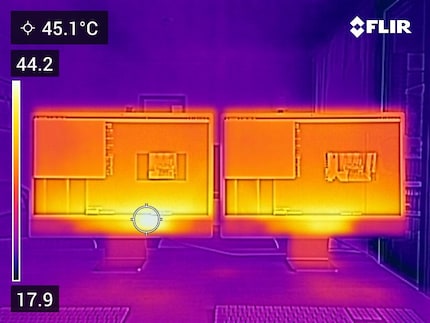
In terms of graphics performance, the M4 with the 10-core GPU beats its predecessor by 20 per cent. Meanwhile, the chip with fewer cores outperforms the previous version by 14 per cent. Both represent solid progress in a generation that’ll give applications such as Lightroom a boost. However, they haven’t turned the iMac into a gaming machine. Apple has improved the Neural Engine for AI calculations by 15 per cent (last slide in the next graphic).
The new chip generation significantly improves the iMac’s value for money. However, the same goes for any other Mac. So, this begs the question: why you should specifically choose this colourful computer?
I personally can’t think of many reasons. As I mentioned earlier, the iMac is basically a flattened 900-franc Mac Mini with a 24-inch display. One major disadvantage of the all-in-one concept is that you can’t simply replace the chip if you want better performance in a few years’ time. Instead, you have to replace the entire device. A Mac Mini combined with a 400-franc office monitor isn’t just less expensive, it’s also more flexible, has more ports and boasts a better cooling system.
If you insist on getting everything from Apple, I’d even say the Mac Mini in combination with the Studio Display is a better deal. Or you could go for a MacBook that’s not tied to a fixed workstation. If you don’t need the Pro model, wait a few months: the M4 MacBook Air’s expected to come out next spring.
There’s one specific situation that makes the iMac worth considering: needing a computer for both office work and decoration. Maybe it’s for a living room or the counter of a stylish boutique, for example. The base model, at 1,299 francs or 1,499 euros, would be brilliant for that.
The M4 iMac is significantly better than its predecessor. Finally, even the base model comes with enough RAM. Finally, the smallest SSD isn’t so slow anymore. And finally, you can charge your mouse and keyboard via USB-C. If all you want is an office computer, the cheapest configuration gives you a capable, attractive device with a decent display.
That being said, the 23.5 inches don’t give you a particularly large work surface. Some other lingering weak points include the sparse selection of ports and the suboptimal cooling system on the M4 with an 8-core CPU. For most people, combining a MacBook Air with an office monitor might be the better solution.
Even so, the base configuration of the iMac is okay value for money. However, this goes out the window if you want the full version of the chip, more RAM or a larger SSD. Upgrades like these drive the price up to dizzying heights – and I wouldn’t recommend anybody get an iMac for over 1,500 francs. In that situation, you’d be better off going for the Mac Mini and a larger screen. You’ll also be able to keep the monitor when you eventually replace your computer.
Pro
Contra
My fingerprint often changes so drastically that my MacBook doesn't recognise it anymore. The reason? If I'm not clinging to a monitor or camera, I'm probably clinging to a rockface by the tips of my fingers.